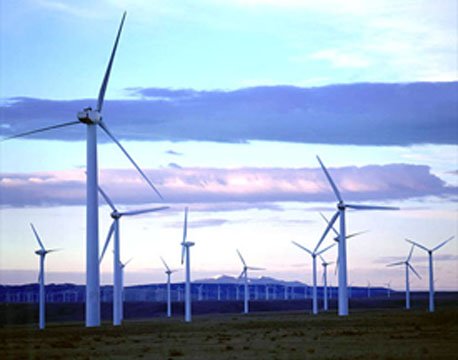Wind Energy
Wind Links
|
Today, people are realizing that wind power "is one of the most promising new energy sources" that can serve as an alternative to fossil fuel-generated electricity. As of 1999, global wind energy capacity topped 10,000 megawatts, which is approximately 16 billion kilowatt-hours of electricity. That's enough to serve over 5 cities the size of Miami , according to the American Wind Energy Association. Five Miamis may not seem significant, but if we make the predicted strides in the near future, wind power could be one of our main sources of electricity. "With today's technology, wind energy could provide 20% of America 's electricity (or about the amount nuclear power provides) with turbines installed on less than 1% of its land area. And within that area, less than 5% of the land would be occupied by wind equipment the remaining 95% could continue to be used for farming or ranching." By the year 2010, 10 million average American homes may be supplied by wind power, preventing 100 million metric tons of CO 2 emissions every year.

Windmills may have been around for almost 1500 years, but it was not imagined that wind power would become affordable enough to compete with fossil fuels. Indeed it has. In fact, many utility services around the world offer wind-generated electricity at a premium of 2 to 3 cents per kWh. If a household used wind power for 25% of its needs, it would spend only $4 or $5 dollars per month for it and the price is still dropping. Compare this to 4.8 to 5.5 cents per kWh for coal or 11.1 to 14.5 cents per kWh for nuclear power. Wind energy is therefore "cheaper than any other new electric generation except natural gas[which] emits one pound of greenhouse gases for every kilowatt-hour of electricity it generates." The success of this energy is in part due to the fact that its costs have gone "down by more than 80% since the early 1980s." Even lower prices are expected, as "industry analysts see the cost dropping by an additional 20 percent to 40 percent by 2005."
|
